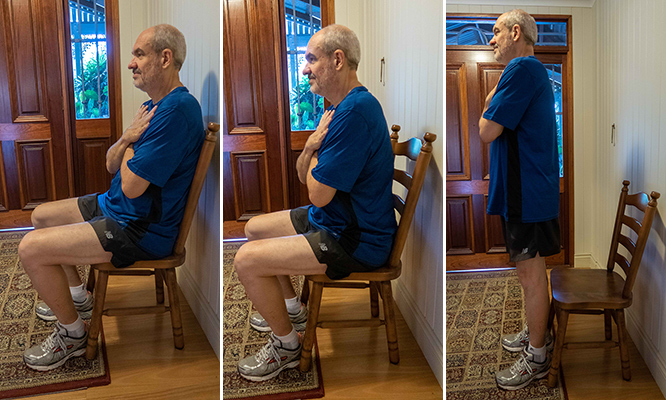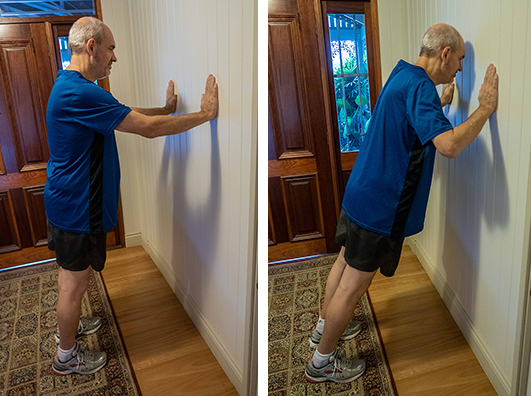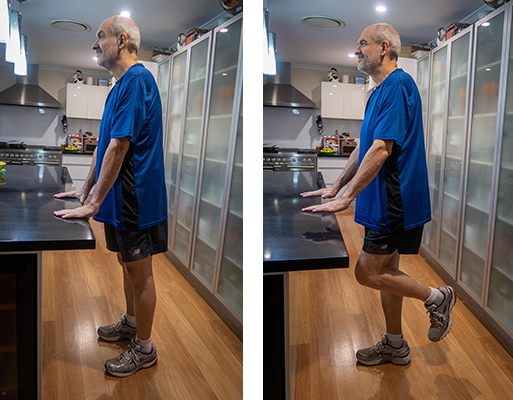You are taking care of yourself by not leaving the house, but is staying at home all day negatively affecting your health anyway? If you are spending most of your day sitting, then the answer is yes.
Exercise has been shown to lower your risk of developing some diseases, reduce your blood pressure, cholesterol and blood sugar, and decrease pain levels. It has even been shown to improve how well your immune system works! Therefore, while you are self-isolating, it is important to remain as physically active as possible, but how can you do this in the confines of your own home?
Here are some tips:
- For every hour you are sitting, get up and walk around your house for 5 minutes. This can be just walking around inside your house or in your garden, or you can make it productive by emptying the dishwasher one dish at a time, hanging up the laundry, or vacuuming one room.
- Move around the house while you are talking to a loved one on the phone.
- While you are waiting for the kettle to boil, march on the spot.
- Turn on the radio and dance with your partner (or by yourself!).
- In every ad of an episode of your favourite television show, do one of the following exercises shown below (try to do each exercise 8-10 times).
- You do not need to hit 150 minutes of exercise per week straight away, especially if you are not currently exercising regularly - start making a few small changes to your daily routine and build-up from there.
Sit to Stand
You will need a sturdy chair, up against a wall, for this exercise.

- Start with your hands across your chest and your feet flat on the floor.
- Lean forward slightly and push through your heels to stand up straight.
- Slowly sit back down, keeping your knees apart.
Wall Push-Up
You will need a sturdy wall for this exercise.

- Start with your hands shoulder width apart on the wall, with the top of your fingers in line with your shoulders.
- Your feet should be half a metre away from the wall.
- Keeping your elbows tucked in, lower your chest towards the wall.
- Your hips and shoulders should stay in a line, and your chin should be tucked in.
- Push back out to the starting position.
Calf Raises
You will need a sturdy bench for this exercise.

- Start with your feet shoulder width apart and both hands on the bench.
- Pushing your weight through your big toes, push up onto your toes.
- Slowly lower your heels back to the ground.
Bicep Curl
You will need two hand weights or two food cans for this exercise.

- Start with your feet shoulder width apart, and one weight in each hand.
- Your arms should be straight down by your side.
- Keeping your elbows tucked in, bend your elbow and lift the weight toward your shoulder.
- Lower the weight back down to your side.
Standing on One Leg
You will need a sturdy bench for this exercise.

- Start holding on to the bench.
- Stand on your right leg.
- If you are able to, let go over the bench and hover your hands above it.
- Hold that position for 20 seconds.
- Repeat on the left leg.
Visit the Exercise Right website for more information about exercising at home
 AUTHOR: Emily Cox graduated UQ in 2015 with a Bachelor of Exercise and Sports Science, having majored in Clinical Exercise Physiology. Working as an Accredited Exercise Physiologist and Research Assistant at a chronic disease management clinic for people aged 55+ years sparked her interest in optimising the prescription of exercise for people with type 2 diabetes and prompted her to undertake her PhD. Her current research is examining the physiological, biochemical and psychological effects of low-volume aerobic and resistance high intensity interval training in people with type 2 diabetes.
AUTHOR: Emily Cox graduated UQ in 2015 with a Bachelor of Exercise and Sports Science, having majored in Clinical Exercise Physiology. Working as an Accredited Exercise Physiologist and Research Assistant at a chronic disease management clinic for people aged 55+ years sparked her interest in optimising the prescription of exercise for people with type 2 diabetes and prompted her to undertake her PhD. Her current research is examining the physiological, biochemical and psychological effects of low-volume aerobic and resistance high intensity interval training in people with type 2 diabetes.



